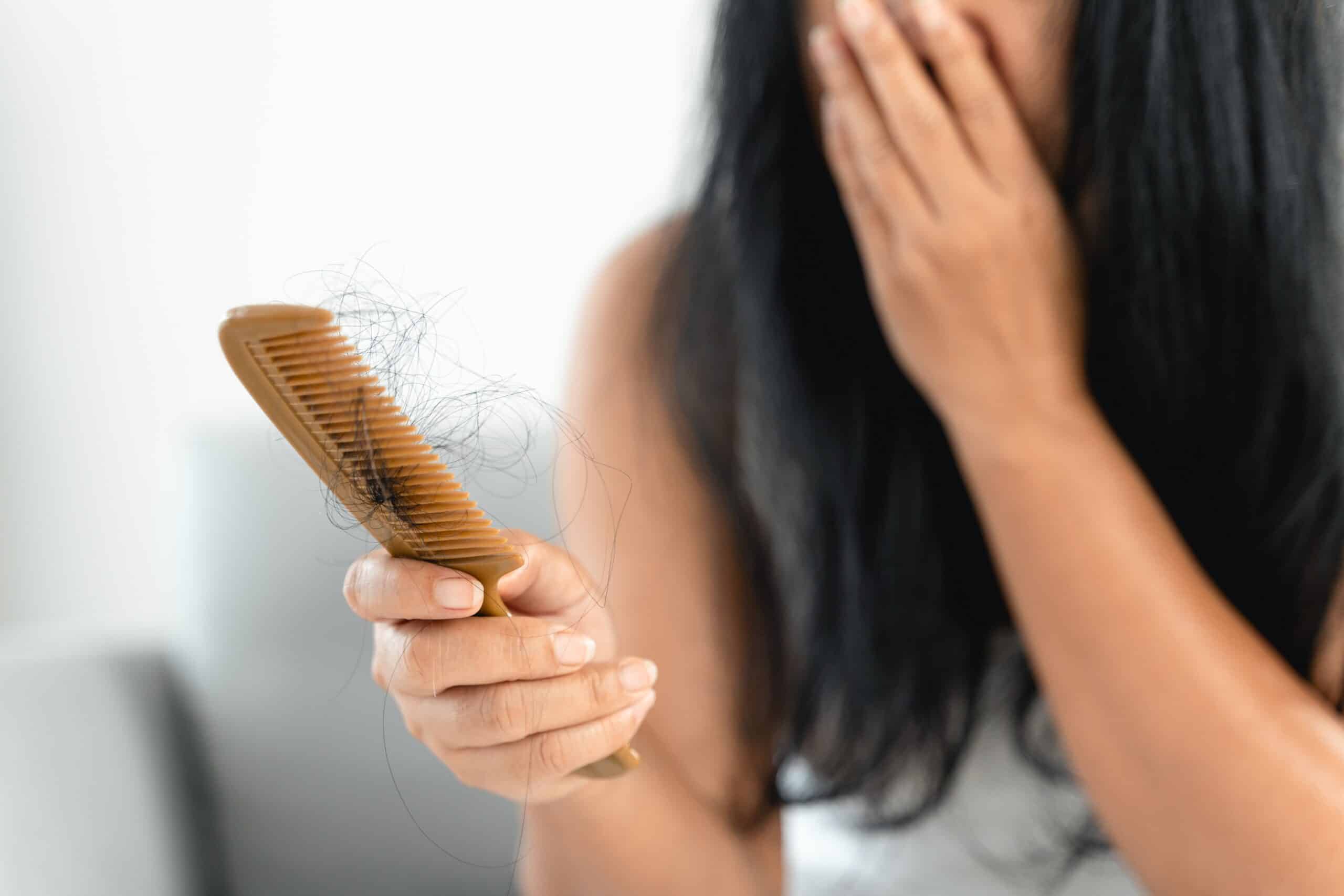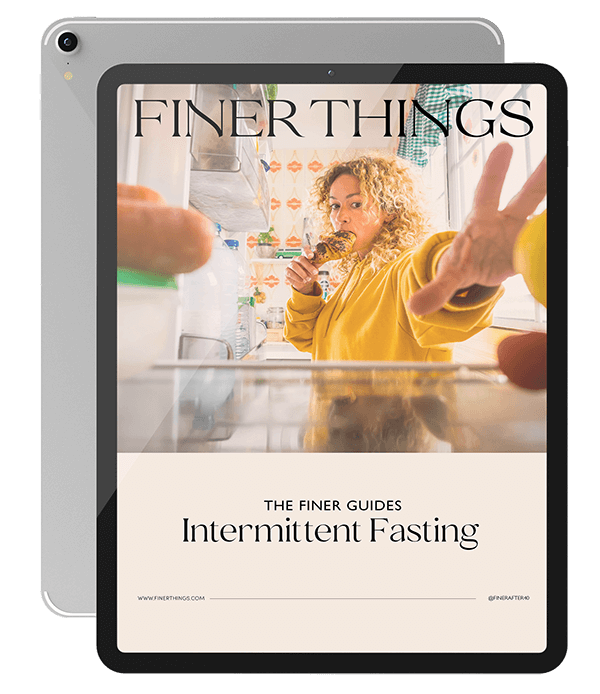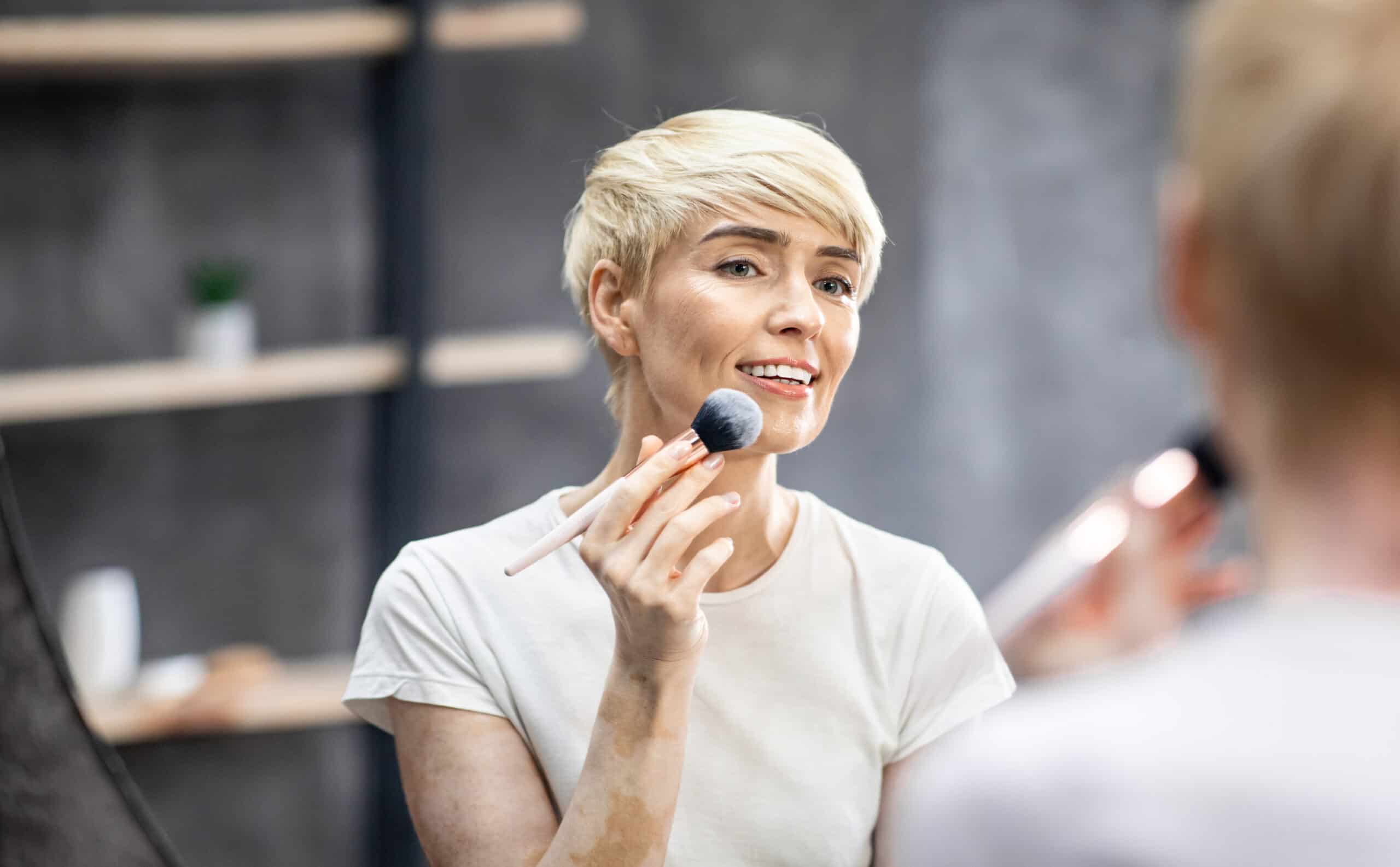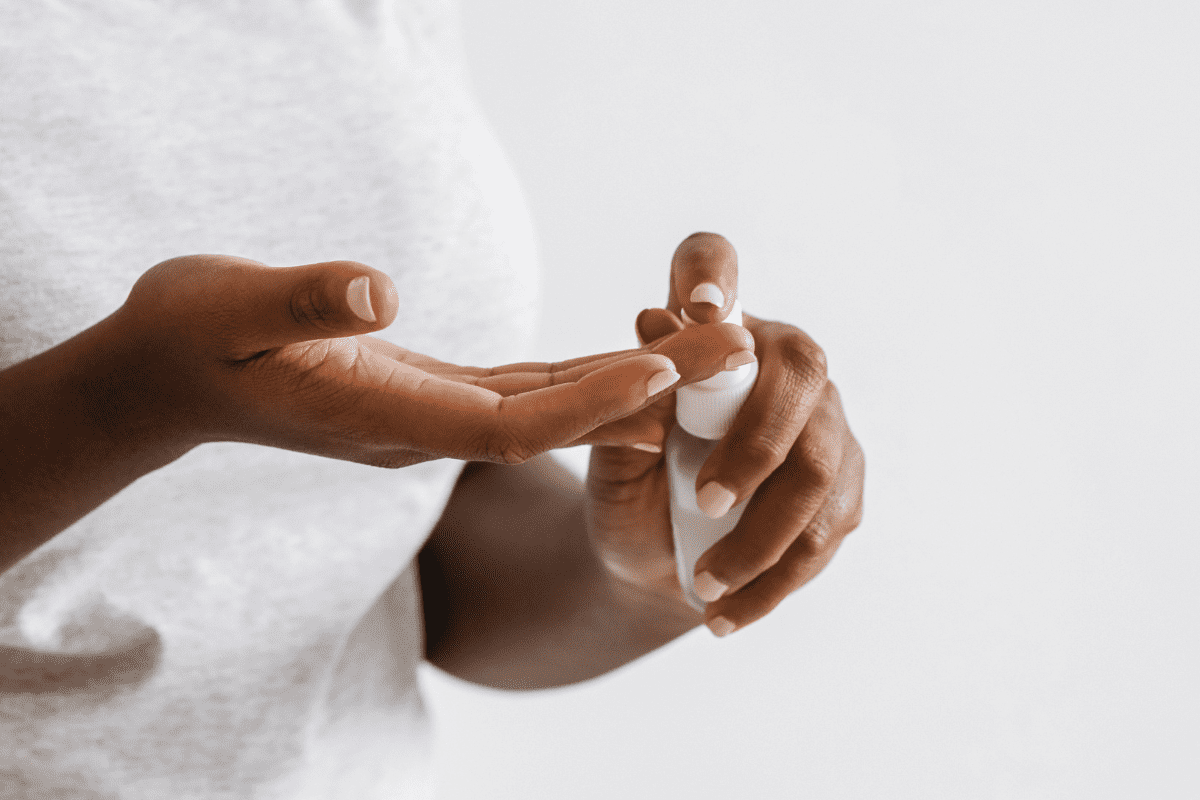Menopause Hair Loss: Tips and Hacks to Stimulate Regrowth

By Christina Lyon
There are so many glorious benefits of getting older—but menopausal hair loss is not one of them.
Fishing out fistfuls of hair from the drain and discovering more bald spots every time you pass a mirror can be downright horrifying. But that doesn’t make it any less common.
One study found that over half of women 50 years old and older experience some form of Female Pattern Hair Loss. And being that menopause happens between the ages of 45-55 and is often accompanied by a dive in hair loss-promoting hormones like estrogen, it makes perfect (if not depressing) sense that the two would go hand-in-hand.
But you don’t have to succumb to a life of baldness and invest in a high-dollar wig to enjoy a good hair flip. Instead, you can take matters into your own hands with these hair-stimulating tips and hacks.

What Causes Hair Loss During Menopause?
Before we get into all the ways you can help hair grow back, let’s first understand what’s causing your strands to jump ship in the first place.
Our hair grows in phases. The anagen phase (also known as the growing phase) is when hair cells rapidly divide, resulting in long hair. The catagen phase (or the transitional phase) is when hair growth slows, and hair follicles shrink. Finally, there’s the telogen phase (or the resting phase), which is when hair falls out.
During menopause (and sometimes even perimenopause), your body experiences a sharp decline in estrogen and progesterone—two hormones that help keep hair follicles healthy. These hormonal changes can cause hair follicles to grow at a total snail’s pace and without all the va-va-voom thickness you’re used to seeing.
While your tresses are growing out weaker, slower, and thinner, the decline in progesterone and estrogen levels triggers an uptick in a group of male hormones called androgens. Much like some of the actual men in our lives, androgens do nothing but wreak havoc on our peace of mind. In turn, hair follicles to shrink and eventually stop producing new strands altogether.
So basically, hair during menopause is caught in a double-whammy: hormones are telling it to grow weaker and fall out more quickly at the same time. As frustrating as it is, hair loss in menopause is not an end-all-be-all situation. There are plenty of ways to fight back.
Tips to Prevent Menopause Hair Loss
Chill Out
I know, I know. This first tip will likely make your eyes roll but just bear with me for a second.
When estrogen goes AWOL, one of the side effects is that our brains become much more susceptible to mood swings, anxiety, and depression. As tempting as it is to let all that hair-pulling frustration out on the first person who dares to ask how your day is going, learning how to effectively manage stress levels will, in turn, help you reduce menopausal symptoms.
So get a journal, take up yoga, do whatever it is you have to do to keep your cool—it’ll help your hair (and your mental health) in the long run.
Move Your Booty
You know what’s great for your hair? Exercise! When you get those endorphins pumping and increase that blood flow, it does wonders for your skin and hair health.
Exercise is known to reduce stress levels (which we already know can impact hair during menopause) and can also help improve the quality of your sleep, and another menopause symptom hair is particularly vulnerable to.
But the benefits of working out don’t stop there. Exercise can also help regulate your hormones, which is especially important during menopause when your levels are constantly in flux.
Moisturize From the Inside Out
Hydration is key for hair health at any age, but it becomes even more important during menopause when dryness can take over.
That’s why it’s important to focus on both internal and external hydration if you want to help hair retain moisture. This way, it’s less likely to snap and break off mid-strand. Drink plenty of water throughout the day, and make sure you’re getting enough healthy fats, antioxidants, and fatty acids in your diet as well.
Throw Out Your Straightener
Heat-based tools are your new enemy. If you want hair that’s strong and resilient enough to withstand the menopausal hair loss battle, lay off the hair dryer, curling iron, and flat iron for a while.
Too much heat will only further damage hair that’s already become weak and brittle due to hormonal changes. When you do plug in your hair tools, use them on the lowest heat setting possible and make sure you’re using a heat-protectant product first.
Go Au Naturel
Covering up gray roots is one thing, but if you’re dyeing your hair regularly, it might be time to take a break.
Harsh hair dyes can contain chemicals that strip hair of its natural oils, leaving it dry and susceptible to breakage. If you’re not ready to give up your color completely, consider switching to a more gentle, hair-healthy natural dye.
Rebalance Your System
Hot flashes, weight gain, thinning hair, and a receding hairline—is there anything menopause doesn’t touch? In women’s health, hormonal imbalance is the root of most menopausal hair loss issues, so it only makes sense to try and rebalance your system.
Get The Finer Life
Our Sunday email has tips and content you will love – exclusively for our subscribers.
"*" indicates required fields
Start by working with your doctor to get your hormone levels tested. Once you know which hormones are out of whack (like estrogen or DHT, two common culprits), you can start taking steps to get them back in balance. This might mean taking supplements (like biotin), eating certain foods, or even undergoing hormone replacement therapy.
Check Your Thyroid
Speaking of hormone imbalances, hair loss can also be a symptom of an underactive or overactive thyroid.
The thyroid is responsible for regulating many different bodily functions and when it’s not working properly, hair loss can be one of the first things to go. If you suspect your hair loss might be due to thyroid issues, talk to your doctor about getting your hormone levels checked.
Make Your Products Work for You
Healthy hair care starts with using the right products. But with all the different hair types and textures out there, how can you know which ones are right for you?
If you’re struggling with menopausal hair loss, look for products that contain biotin, keratin, or essential oils—ingredients that are known to help hair look and feel its best.
You should also avoid products with harsh sulfates, which can strip hair of its natural oils and leave it feeling dry and brittle. Instead, opt for hair care products that are sulfate-free and full of nourishing ingredients.
Try an Over-the-Counter
Androgenetic alopecia—the fancy, medical word for hair loss—affects both men and women as we age. While the cause of hair loss like this is often genetic, it can also be the result of hormonal changes.
If you’re dealing with menopausal hair loss, you might want to try an over-the-counter hair loss treatment that contains minoxidil. Minoxidil is the only FDA-approved hair loss treatment for women. Results can show as early as four months, but keep in mind it doesn’t work for everyone.
Enjoy a Massage
If you want to stimulate hair growth and enjoy a little self-care at the same time, try giving yourself a scalp massage.
Scalp massages help increase blood flow to the hair follicles, which can promote new hair to grow. They also help to loosen any dirt or build-up that might be clogging up hair follicles and preventing hair from growing.
To give yourself a scalp massage, simply wet your hair and apply a generous amount of hair oil to your scalp. Then, using your fingers, massage your scalp in small, circular motions for 5-10 minutes. You can do this as often as you like, and even make it a daily practice!

Don’t Tighten Your Ponytail
Tying your mane back in a tight ponytail might be the easiest way to get it out of your face, but it can also amp up hair shedding—especially in menopausal women.
When hair is pulled too tight, it can put unnecessary strain on the hair follicles and lead to breakage. If you’re worried about hair loss, try letting your hair down or wearing it in a loose bun or other less-straining styles instead.
Better yet, why not rock a fun, sassy short hairstyle? A tousled bob or short lob will add texture to thinning areas and look oh so fab.
Use a Gentle Touch
When it comes to hair loss, sometimes less is more. Over-brushing, over-washing, and even over-styling can all lead to hair shedding and breakage.
To keep your hair healthy and strong, be sure to use a soft-bristled brush and take extra care not to tug or pull at knots. Start at the bottom of your hair and work your way up, taking your time to detangle any tangles gently.
Make a Date With Your Doctor
If you’ve tried all of the above and you’re still seeing hair fall out in clumps, it’s time to see a doctor or dermatologist. They might prescribe you other, stronger treatment options to rebalance those post-menopausal hormones like spironolactone, which is used to treat hair loss in women.
Ditch the Shedding & Say Hello to Healthy Strands
Many women experience hair loss during menopause, and it can really mess with our self-esteem and overall well-being.
But with the right hair care routine and some TLC, you can start to see hair regrowth and combat the thinning. So don’t be afraid to give your hair a little extra love during this time—it deserves it!

Want a Free Guide?
You will receive our free 19-page guide and access to our exclusive content, private invitations, and tips you’ll love.
"*" indicates required fields
Facebook Group




